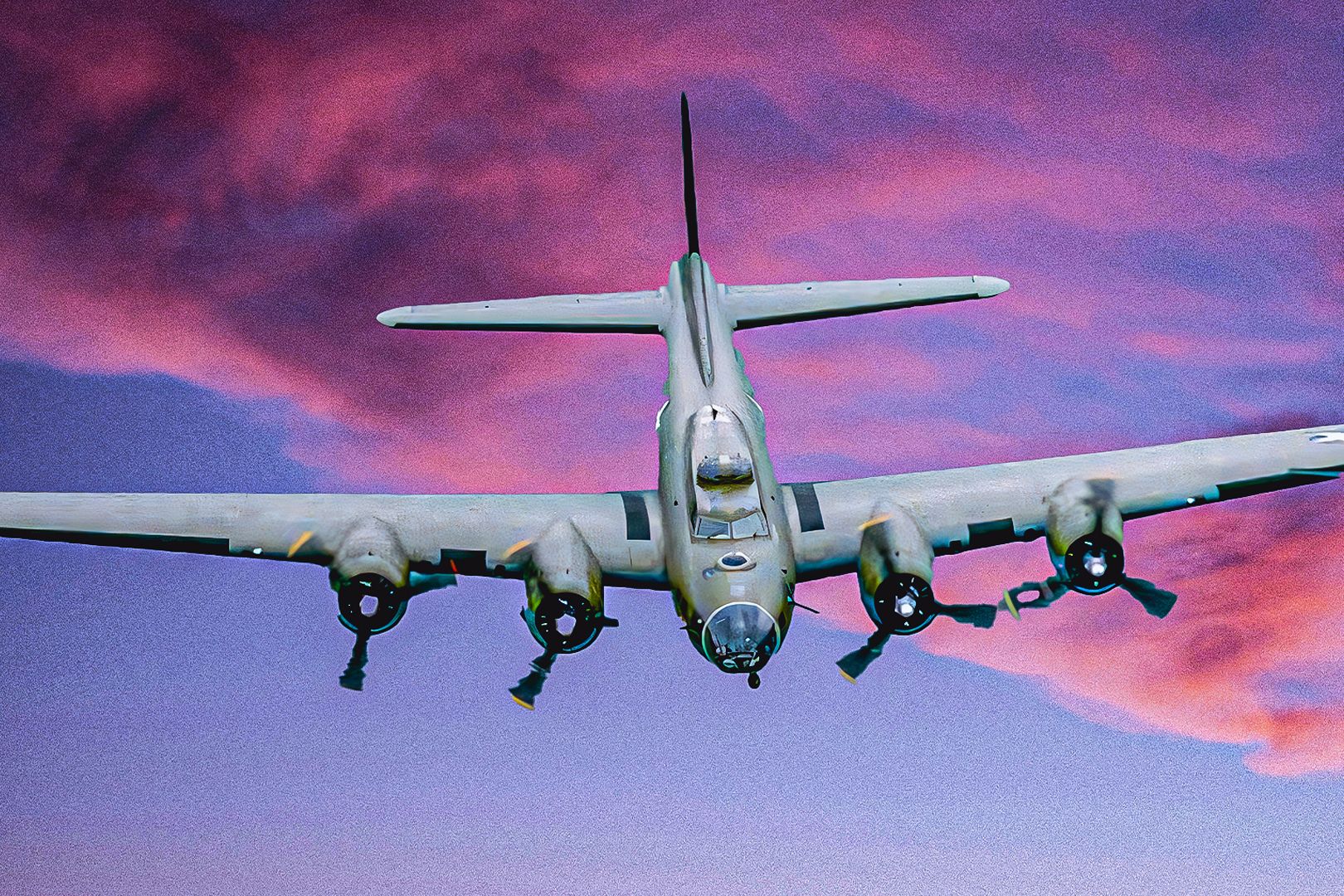Summary The B-29 Superfortress was crucial in ending WWII, dropping atomic bombs on Japan. The C-47 Skytrain was vital for Allied logistics and essential for US forces' operations. The P-51 Mustang was a premier long-range fighter, destroying thousands of enemy aircraft.
The US lacked an independent air force service branch during World War II . Like Japan, air power was handled by the United States Army Air Force and the Navy's airwing (the US Air Force was established post-war in 1947). The US Army Air Force (USAAF) grew to become not only the largest US Air Force ever but also the largest air force in the world in WWII.

Countless thousands of American aircraft were built (and lost) in World War II . Here are five of the top USAAF aircraft of WWII. 1 Boeing B-29 Superfortress 3,970 B-29 Superfortresses were built (including those operated by the RAF) Number built: 3,970 Dates in service: 1944 to 1960 Notable for: firebombing Japan, dropping nuclear bombs Perhaps nothing in the USAAF symbolized American airpower as much as the formidable B-29 Superfortress .
While the heavy/strategic bomber was produced in comparatively low numbers compared to other top-produced bombers, it was the most expensive project of the war ($3 billion). When it was built, the Superfortress was at the cutting edge of aviation innovation, with a pressurized cabin and many other innovations. The B-29 arrived very late in the war and took part in the firebombing of Japan.
They contributed to bringing the war to an end by dropping the two nuclear bombs on Japan (and they remained the only aircraft to drop atomic bombs in anger). The Soviets were able to reverse engineer the B-29 to create the Tupolev Tu-4. The incredible industrial might of American aircraft manufacturers helped turn the war against the Axis.
2 Douglas C-47 Skytrain Over 10,000 C-47 Skytrains were built Number built: Over 10,000 Dates in service: 1942 to mostly retired in 1967 (some air forces continue to operate them) Notable for: principal Allied transport It is often said that amateurs talk strategy, while professionals talk logistics. In many ways, logistics is what wins and loses wars. For the United States fighting across the world, World War II was a massive logistics undertaking—such as the world had never seen.
According to the Air Force Historical Support Division , General Dwight D. Eisenhower stated that the C-47 was one of the four principal instruments that enabled the Allies to win the war. The C-47 Skytrain was developed from the DC-3 airliner and could carry 25 paratroopers or up to 10,000 lbs of cargo.
It was used as the standard transport and as a glider tug by the USAAF. It was flown by every airborne force operation during the US participation in the war. The C-47 continued to be used in foreign militaries long after the war.
The United States of America was blessed with multiple iconic aircraft during WWII. What were their specific individual roles? 3 Boeing B-17 Flying Fortress Over 12,700 B-17 Flying Fortresses were built Number built: Over 12,700 Dates of service: 1938-mostly retired soon after the war Notable for: dropping the most bombs over Germany The B-17 Flying Fortress was the predecessor of the B-29 Superfortress. It was developed in the 1930s and was produced in high numbers during the war (the third most produced bomber of the war).
The B-17 was particularly used in the European theater, where it flattened German cities, dropping more bombs than any other aircraft during the war. Over the war, the B-17 proved to be more versatile than just a bomber; it was also used as a transport, antisubmarine aircraft, search-and-rescue aircraft, and in other roles. The B-17 was noted as a reasonably fast and high-flying bomber able to carry out missions over long distances.
The Axis powers produced a range of mostly light and medium bomber aircraft in World War Two. 4 Lockheed P-38 Lightning 9,536 P-38 Lightnings were built Number built: 9,536 Dates of service: 1941-1949 Notable for: highly successful long-range fighter and recon aircraft The P-38 was developed as a high-altitude interceptor but was modified to be used as a bomber and reconnaissance aircraft. Most of America's top aces of the war flew the P-38 (including the top ace, Maj.
Richard Bong, with 40 victories). The fighter had a distinctive twin-boom design and accounted for 90% of the American aerial film captured over Europe. The P-38 was also used as a night fighter, pathfinder, fighter-bomber, and other roles.
The only American pilot to deflect to the Axis powers did so, flying a stolen P-38 . The P-38 found the greatest success in the Pacific theater, where it benefited from its long range and was the USAAF's top long-range fighter until the P-51D Mustang started to arrive in large enough numbers. France had a large and powerful air force in 1940, but it was caught while modernizing and collapsed with the rest of France.
5 North American Aviation P-51 Mustang 14,686 P-51 Mustangs were built Number built: 14,686 Dates of service: 1942 - retired soon after the war Notable for: destroying thousands of enemy aircraft The Air Force Historical Support Division states, " One of the premier fighters of the war was the P-51 'Mustang.' It was a long-range fighter used to escort heavy bombers on missions up to 2,000 miles. The aircraft was the top USAAF air-to-air fighter in World War II.
" Over the course of the war, Mustangs claimed to have destroyed some 4,950 enemy aircraft. The P-51 Mustang was a single-seat fighter used in the subsequent Korean War . It was originally built to meet British RAF needs and is regarded as a great example of Anglo-American wartime cooperation.
The RAF and many other Allied air forces deployed this fighter during and after the war..



















